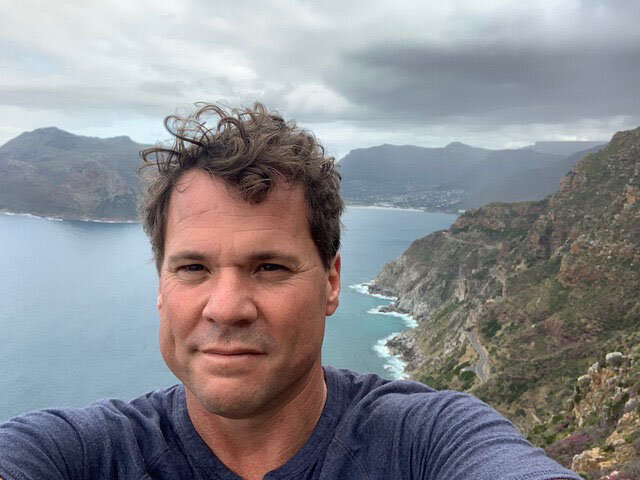Bradley Beal will have the ball in his hands often in 2023-24, but will he thrive as a playmaker for the Suns?
Before the 2020 trade deadline, the Houston Rockets traded Clint Capela to Atlanta, signaling they would play the rest of the season without a traditional center. The Rockets won a playoff series starting PJ Tucker at the five, but that was effectively the end of the James Harden era in Houston. Harden was traded early the following season, and the centerless strategy was short-lived.
Three years later, the Phoenix Suns are set to play without a point guard. In late June, they traded Chris Paul for Bradley Beal. Then, instead of keeping them but point guard (Cameron Payne), they shed salary in a trade with the San Antonio Spurs.
There were 69 players who were on the floor for at least 3,000 offensive trips last season and recorded assists on at least 20 percent of their individual possessions. As the rosters stand today, the Suns are the only team without at least one of those 69 players.
Jordan Goodwin, also acquired in the Beal trade, had a 27.6 percent assist percentage for the Wizards last season. But he went undrafted two years ago, played just 1,111 career minutes and was on the floor for fewer than 2,400 possessions last season. He’ll certainly get some backup minutes for the Suns this year, but he might not be part of an eight- or nine-man playoff rotation.
Either way, while the Suns have three of the best scorers in the league*, they will be playing mostly without a true point guard. While there’s no doubting the talent of the trio set to make more than $444 million over the next three years, there’s certainly some curiosity about how they’ll play together offensively.
* Among 285 players who have played at least 200 games in the last five years, Kevin Durant (27.8), Beal (27.0) and Devin Booker (26.6) rank sixth, ninth and 10th in points per game . No other team has three guys in the top 25.
Here are some notes, numbers and film on the Suns new big three.
1. Pick-and-roll bumpers
Indications are that Beal will be the starting point guard in a starting lineup that also includes Booker, Durant, Deandre Ayton and one of 11 Suns making less than $3 million.
Beal played less than 10% of his minutes at point guard (with none of Goodwin, Monte Morris or Delon Wright on the floor) last season. But the last two seasons have come with the two highest assist percentages of his career: 21.1 percent in 2021-22 and 19.6 percent last season.
According to Second Spectrum tracking, Beal had 38.2 ball-screens per 100 possessions assigned to him last season. That rate ranked 27th among 109 players who used at least 500 screens. He can make plays out of the pick-and-roll when he gets the attention of the defense…
Booker had nearly as many ball-screens per 100 possessions (36.8) for him. He is a scorer first and foremost and will make things difficult at times. But generally he is willing to go off the ball when the situation calls for it…
2. Durant in the post
The offense doesn’t have to run from the top of the floor. Over the past three seasons, Durant has gone an efficient 112-for-119 (58%) on post-ups, according to Second Spectrum tracking. That’s not a huge sample size, partly because he doesn’t post a ton and partly because he’s going to see a lot of double teams…
Whether shooting or passing, Durant in the post is generally good offense that doesn’t require a traditional point guard.
3. One on one
The play above started with a Booker-Durant pick-and-roll to an empty corner, which the Nuggets converted…
Opponents may want to switch actions between the Suns’ three stars in an effort to stay in front of them. But few teams will have three capable defenders, and even fewer (any?) will have three capable defenders with size.
More changes lead to more isolations. Over the past three seasons, Durant’s teams have scored an efficient 1.11 points per *immediate possession when he’s isolated, according to Second Spectrum. That mark ranks seventh among 61 players with at least 500 straight shutouts over the past three years (including playoffs). Booker’s (0.98, 42nd) and Bill’s (0.97, 45th) grades, however, are both in the bottom half of the list.
* Direct possession = When the player or teammate he passes to (within one dribble of the pass) shoots, is fouled, or turns the ball over.
4. Shooters make the best screeners
If defenses don’t change, the Suns’ big three will wreak havoc if they’re willing to set screens. Beal has set more screens (both on and off the ball) per 100 possessions than Booker in recent seasons, and the Wizards had a timeout game using him as a screener last season.
First he had set a pin-down screen for a shooter (Corey Kispert), then he would pivot and a back-screen for Kristaps Porzingis…
Beal’s defender doesn’t help on the back-screen because he doesn’t want to get distracted by Beal. If he does and Porzingis isn’t open to the cut, Kispert looks for Beal, who flows in a handoff from the big to the high post.
You could see the Suns running this action with Durant in place of Porzingis. And another secondary option could be Durant getting a good spot on the right block if he’s not open initially.
5. Will they run?
One area where the lack of a true point guard could hurt is in transition. The Suns ranked last in possession percentage (13.4%) in transition last season and played slower (97.8 possessions per 48 minutes) when Paul was on the floor.
But Paul, at least, would be looking down the floor for transition opportunities. According to Second Spectrum, he averaged 5.4 passes per game, which ranked eighth in the league. Beal (2.1), Booker (1.6) and Durant (3.0) averaged less than Payne (3.2), who only played 20 minutes a night.
So the Suns should be favored to rank last in passing percentage for the second straight season. And that will make them a little less effective than they could be.
6. Is 2 greater than 3?
Beal, Booker and Durant are all capable shooters off the dribble. But all three are far more capable inside the arc than they are beyond it. There were 85 players who attempted at least 75 pull-up threes and at least 75 pull-up threes last season. Among those 85, Durant (59.6% vs. 37.0%), Booker (51.5% vs. 30.9%) and Beal (49.0% vs. 33.0%) had the third, sixth and 13th largest difference, respectively, between how well they shoot pull-up 2s and how well they should shoot pull-up 3s.
Those differentials are more about how well they shot inside the arc than how poorly they shot beyond it, though Booker and Beal were both below league average (33.8%) on pull-ups -up 3. Most importantly, all three are 2-point shooters. Overall, each made less than 30% of their shots from 3-point range, with the league 3-point average at 38.7%.
Over the past three seasons, Durant has taken three times as many pull-up 2s (1,316) as catch-and-shoot 3s (445). He is much more likely to put the ball on the floor than shoot it when he catches from beyond the arc…
Eric Gordon could be the Suns’ fifth shutout (and/or starter) and has hit 61% of his shots from 3-point range over the last seven seasons. But if the Suns’ big three ratios stay well below league average, they’ll struggle with the math.
And they might still have the best offense in the league.
* * *
John Schuhmann is a senior statistician for NBA.com. You can e-mail him here, find his archive here and follow him on Twitter.
The views on this page do not necessarily reflect the views of the NBA, its clubs or Warner Bros. Discovery.

“Falls down a lot. Unapologetic alcohol guru. Travel specialist. Amateur beer trailblazer. Award-winning tv advocate. Hipster-friendly twitter aficionado”







